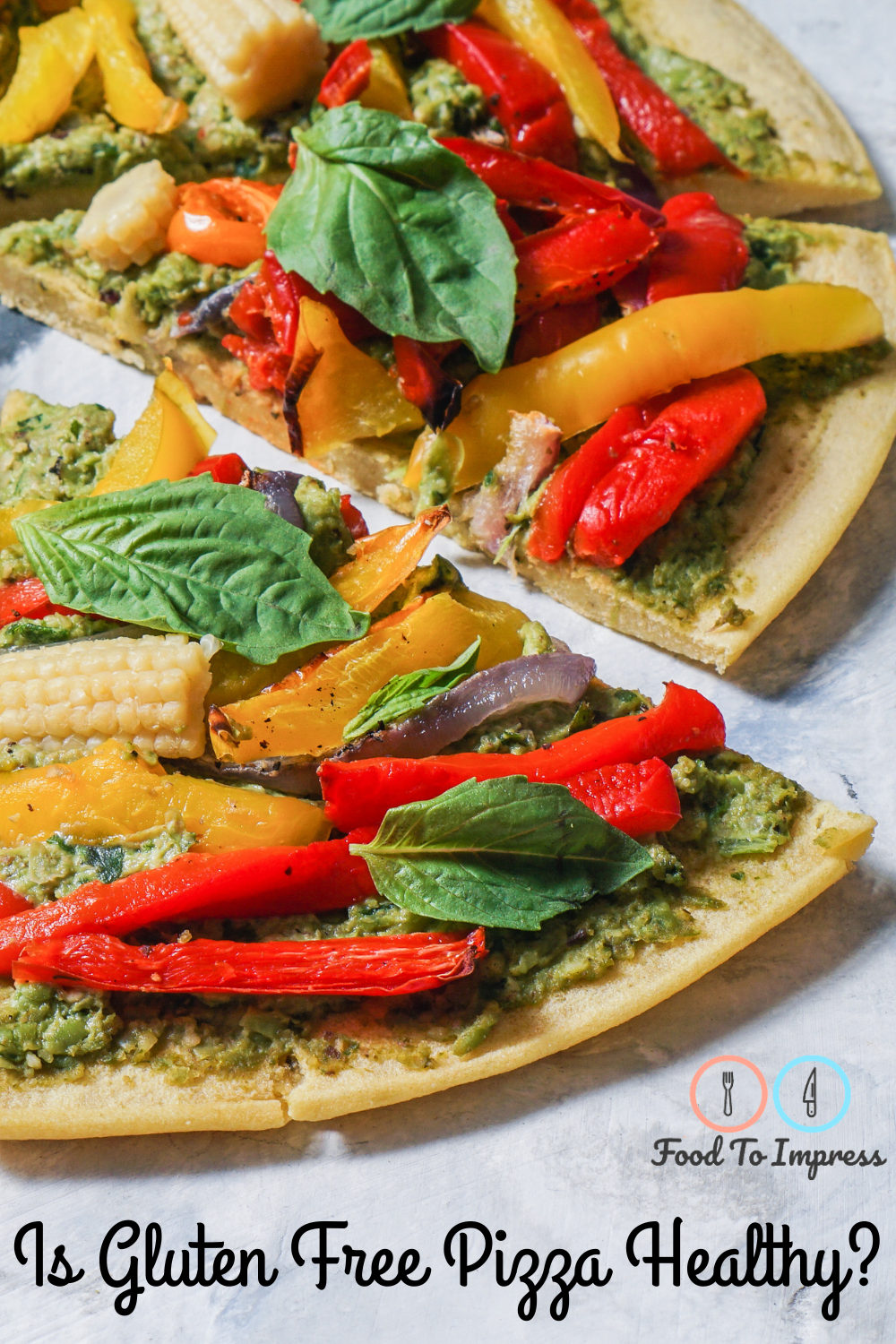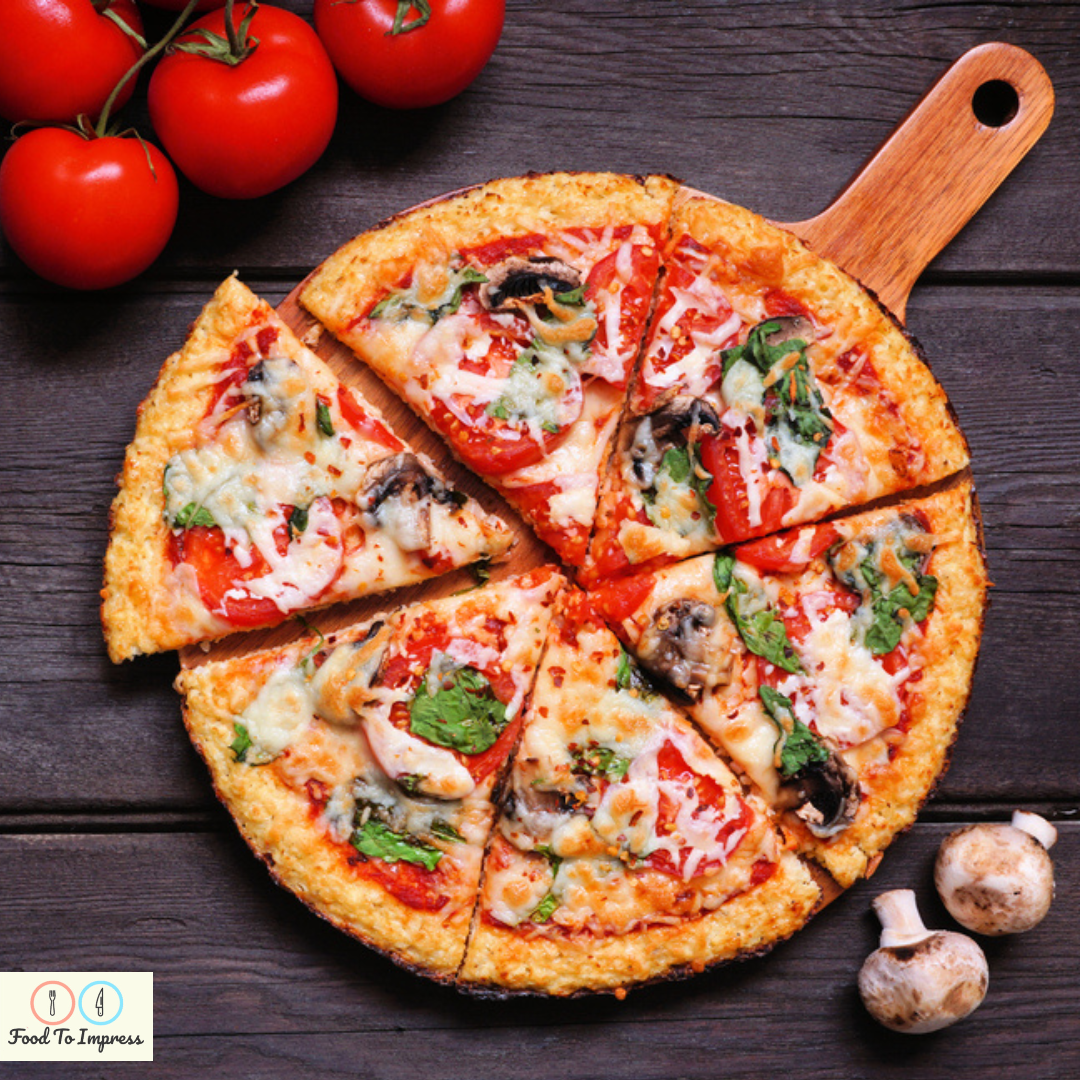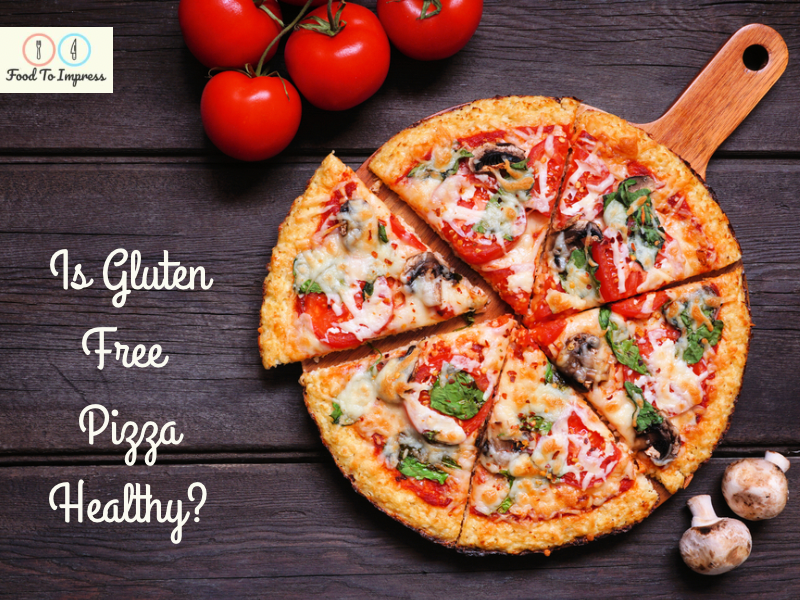A gluten-free diet has become increasingly popular in recent years, and for some people, it’s a necessity due to gluten intolerance or celiac disease. Pizza is one of the most popular foods in the world, but for those who need to avoid gluten, it can be a challenge. Fortunately, there are many gluten-free foods and pizza options available today. But the question remains, is gluten-free pizza healthy? Read on for the answer to that question.
Gluten-free pizza can be a healthy option, but it really depends on the toppings you choose and the type of gluten-free crust.
What is Gluten-Free Pizza?
Gluten-free pizza is a type of pizza made without gluten, a protein found in wheat, barley, and rye. Traditional pizza dough is made from wheat flour, which is why it contains gluten. Gluten-free pizza dough, on the other hand, is made from alternative flours such as rice flour, corn, tapioca flour, or almond flour. These alternative flours are used to create a dough that has a similar texture to traditional pizza dough, but without the gluten.
Regular pizza crust is made with gluten whether you make it at home or purchase it at the grocery store. If you have food allergies to gluten, traditional pizza can cause upset or harm your digestive system.

Health Benefits of Gluten-Free Pizza
For people with gluten intolerance or celiac disease, avoiding gluten is crucial for their health. Eating gluten can damage the lining of the small intestine and cause a range of symptoms, including abdominal pain, bloating, and diarrhea. By choosing gluten-free pizza, people with gluten intolerance or celiac disease can enjoy a pizza without the adverse effects of gluten.
Gluten-free pizza can be a healthy option for people who are trying to reduce their gluten intake. While gluten isn’t necessarily harmful to everyone, some people may experience bloating, gas, or other digestive issues after consuming gluten. Therefore, choosing gluten-free pizza can help them avoid these symptoms.
What Are Some Healthy Gluten-Free Pizza Options?
There are many healthy gluten-free pizza options and combinations to choose from. One way to make a healthy gluten-free pizza is to start with a crust made from whole-grain flours such as brown rice or quinoa flour. These flours are higher in fiber and nutrients than refined flours and can help make the pizza more filling and satisfying.
For gluten-free toppings, choosing vegetables such as spinach, bell peppers, and mushrooms can add flavor and nutrients without adding too many calories or carbs. Adding lean meats or protein such as chicken or shrimp can help make the pizza more filling and provide important nutrients like iron and protein.
For cheese, choosing low-fat options such as part-skim mozzarella or goat cheese can help keep the overall fat and calorie count lower. Finally, incorporating healthy fats such as avocado or olive oil can add flavor and nutrition to the pizza. Overall, there are many healthy gluten-free pizza options and combinations to choose from, and with a little creativity and experimentation, it’s easy to create a delicious and nutritious gluten-free pizza that everyone can enjoy.

Nutritional Value of Gluten-Free Pizza
Gluten-free pizza can be a healthy option, but it depends on the ingredients used. Like traditional pizza or think crust pizza, the nutritional value of gluten-free pizza varies depending on the toppings and crust.
Gluten-free crusts are typically higher in calories, fat, and carbohydrates than traditional pizza crusts because they often contain more starches and added fats to compensate for the lack of gluten. However, some gluten-free pizza crusts are made with whole-grain flours and are therefore higher in fiber and other nutrients.
When it comes to toppings, choosing healthier options such as vegetables, lean proteins, and low-fat cheese can help make gluten-free pizza a nutritious meal. However, many traditional pizza toppings, such as pepperoni and sausage, are high in saturated fat and sodium, which can contribute to chronic health problems and higher cholesterol levels. Therefore, it’s essential to choose toppings wisely and in moderation.
Read more about the carbs in gluten free Domino’s pizza.
How Many Carbs in Gluten Free Pizza
Is Cauliflower Pizza Crust Gluten-Free?
Cauliflower pizza crust has become a popular healthier option, gluten-free alternative to traditional thin crust pizza. It is made from cauliflower rice, which is mixed with other ingredients such as eggs, cheese, and seasonings to create a crust that is low in carbs and gluten-free. Because cauliflower pizza crust does not contain any wheat flour or gluten, it can be a suitable option for those who need to avoid gluten. However, it’s essential to note that not all cauliflower pizza crusts are gluten-free.
Some recipes may contain wheat flour or other gluten-containing ingredients, so it’s crucial to check the ingredients carefully before consuming. Overall, cauliflower pizza crust can be a delicious and healthy alternative to traditional pizza crust, but it’s important to make sure that the cauliflower crust is made with gluten-free ingredients.
You can purchase pre-made crusts that are gluten-free just check the packaging to be sure it is a healthier choice.
Low Carb Diet and Gluten-Free Pizza Crust
Gluten-free pizza can be a suitable option for people on a low-carb diet, as long as the crust is made with low-carb ingredients. Traditional pizza crust is high in carbohydrates due to its wheat flour content, but gluten-free pizza crusts made from alternative flours such as almond or coconut flour can be lower in carbs.
Choosing low-carb toppings such as vegetables, lean proteins, and healthy fats can help keep the overall carb count of the pizza low. However, it’s essential to be aware that some gluten-free pizza crusts may contain higher amounts of carbohydrates than others, so it’s crucial to read the nutrition facts and ingredient labels carefully. Overall, gluten-free pizza can be a delicious and good option for those on a low-carb diet or dietary restrictions, but it’s important to choose toppings and crusts wisely to keep the carb count in check.
Potential Drawbacks of Gluten-Free Pizza
Despite its benefits, gluten-free pizza also has some potential drawbacks. One of the biggest issues with gluten-free options that it’s often more expensive than traditional pizza. The alternative flours used to make gluten-free pizza crusts are often more expensive than wheat flour, which can drive up the cost of gluten-free pizza.
Another potential drawback of gluten-free pizza is that it may not be as satisfying as traditional pizza. Gluten gives traditional pizza dough its elasticity and chewiness, and without it, gluten-free pizza crusts can be denser and less chewy. This texture difference can affect the overall enjoyment of gluten-free pizza for some people.
Final Answer: Is Gluten Free Pizza Healthy?
So, is gluten free pizza healthy? The answer is that it can be. Gluten-free pizza can be a nutritious meal when made with healthy toppings and whole-grain flours. It can also be a lifesaver for people with gluten intolerance or celiac disease. However, it’s important to keep in mind that gluten-free pizza can be more expensive. Be sure to read the ingredient list closely or make your own delicious gluten-free pizza for the best results.

